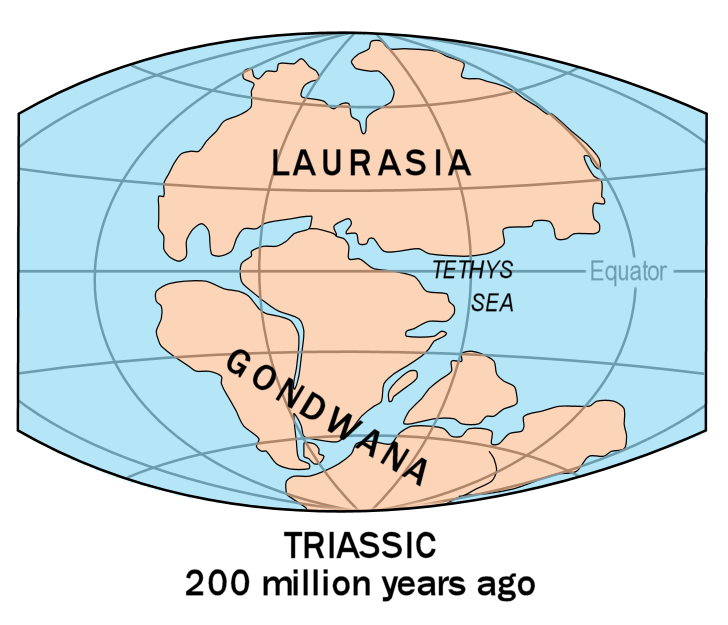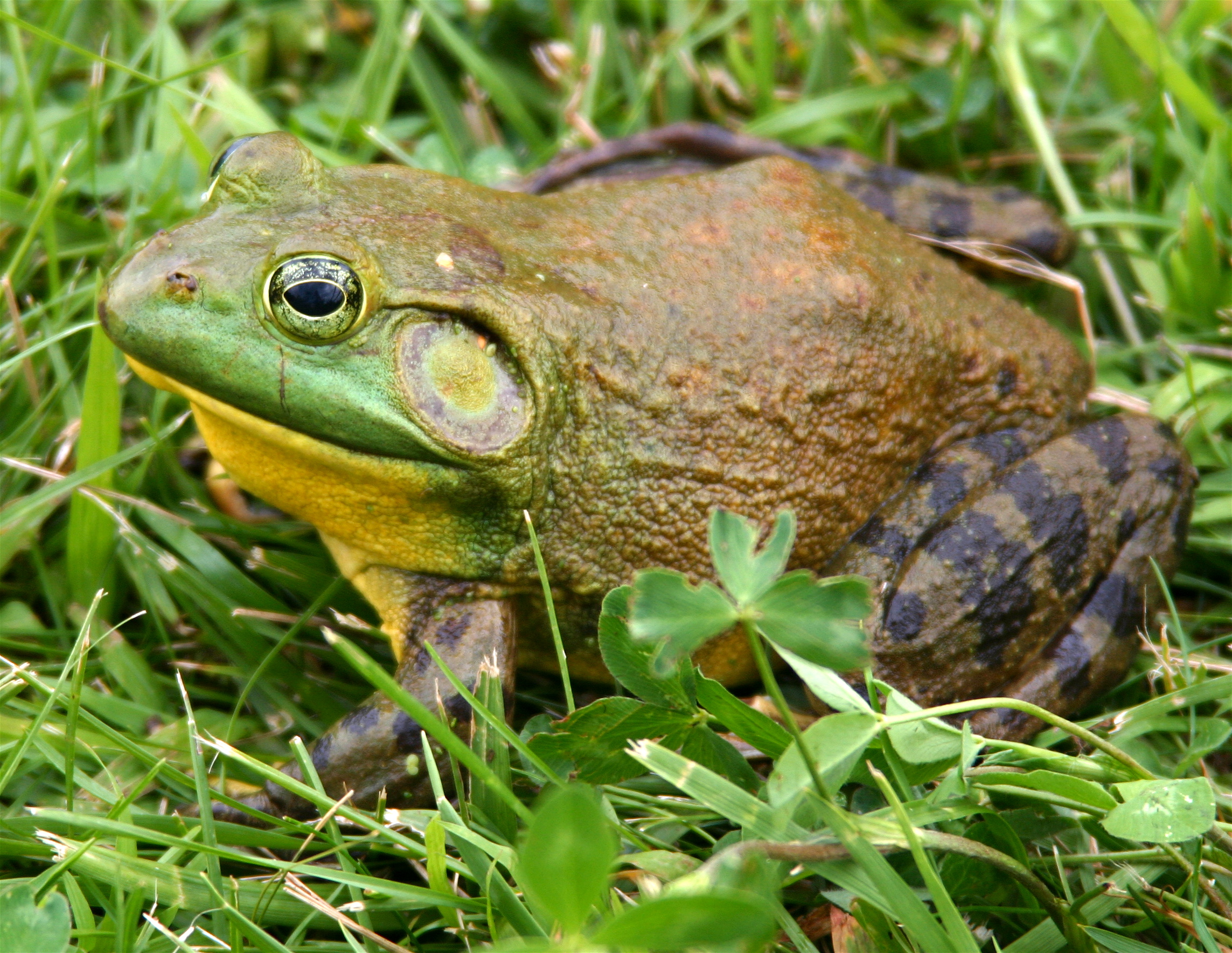|
Cardioglossa Oreas
''Cardioglossa oreas'' (common name: Mount Okou long-fingered frog) is a species of frog in the family Arthroleptidae. It is endemic to Cameroon and known from the Western High Plateau between Mount Oku and the Bamboutos Mountains. Records from Mount Manengouba refer to ''Cardioglossa manengouba''. Description Males measure and females in snout–vent length. Unusually for the genus ''Cardioglossa'', the third finger in males is not elongated. It is nevertheless sexually dimorphic in that males have spines in the fingers whereas females do not. The tympanum is small and inconspicuous, another unusual character within ''Cardioglossa''. Furthermore, the characteristic dorsal markings and the white line running under the tympanum are absent. Despite these unusual morphological characters, genetic data nest ''C. oreas'' well within the genus ''Cardioglossa''. Habitat and conservation ''Cardioglossa oreas'' occurs in montane forests, often in bamboo forests; it also occurs ... [...More Info...] [...Related Items...] OR: [Wikipedia] [Google] [Baidu] |
Arthroleptidae
The Arthroleptidae are a family of frogs found in sub-Saharan Africa. This group includes African treefrogs in the genus '' Leptopelis'' along with the terrestrial breeding squeakers '' Arthroleptis'', and several genera restricted to the Guinean forests of central and west Africa, such as the hairy frog The hairy frog (''Trichobatrachus robustus'') also known as the horror frog or Wolverine frog, is a Central African species of frog in the family Arthroleptidae. It is monotypic within the genus ''Trichobatrachus''. Its common name refers to the ... ''(Trichobatrachus)''. Taxonomy This family is the phylogenetic sister group of reed frogs, the Hyperoliidae, which together form the lineage Laurentobatrachia, a name that commemorates work on African frogs by the Argentine herpetologist Raymond Laurent. This group is further nested within the Afrobatrachia, an ancient African endemic lineage that includes the Brevicipitidae and Hemisotidae. The Arthroleptidae are separated ... [...More Info...] [...Related Items...] OR: [Wikipedia] [Google] [Baidu] |
Above Sea Level
Height above mean sea level is a measure of the vertical distance (height, elevation or altitude) of a location in reference to a historic mean sea level taken as a vertical datum. In geodesy, it is formalized as '' orthometric heights''. The combination of unit of measurement and the physical quantity (height) is called " metres above mean sea level" in the metric system, while in United States customary and imperial units it would be called " feet above mean sea level". Mean sea levels are affected by climate change and other factors and change over time. For this and other reasons, recorded measurements of elevation above sea level at a reference time in history might differ from the actual elevation of a given location over sea level at a given moment. Uses Metres above sea level is the standard measurement of the elevation or altitude of: * Geographic locations such as towns, mountains and other landmarks. * The top of buildings and other structures. * Flying obje ... [...More Info...] [...Related Items...] OR: [Wikipedia] [Google] [Baidu] |
Amphibians Described In 1972
Amphibians are four-limbed and ectothermic vertebrates of the class Amphibia. All living amphibians belong to the group Lissamphibia. They inhabit a wide variety of habitats, with most species living within terrestrial, fossorial, arboreal or freshwater aquatic ecosystems. Thus amphibians typically start out as larvae living in water, but some species have developed behavioural adaptations to bypass this. The young generally undergo metamorphosis from larva with gills to an adult air-breathing form with lungs. Amphibians use their skin as a secondary respiratory surface and some small terrestrial salamanders and frogs lack lungs and rely entirely on their skin. They are superficially similar to reptiles like lizards but, along with mammals and birds, reptiles are amniotes and do not require water bodies in which to breed. With their complex reproductive needs and permeable skins, amphibians are often ecological indicators; in recent decades there has been a dramatic dec ... [...More Info...] [...Related Items...] OR: [Wikipedia] [Google] [Baidu] |
Endemic Fauna Of Cameroon
Endemism is the state of a species being found in a single defined geographic location, such as an island, state, nation, country or other defined zone; organisms that are indigenous to a place are not endemic to it if they are also found elsewhere. For example, the Cape sugarbird is found exclusively in southwestern South Africa and is therefore said to be ''endemic'' to that particular part of the world. An endemic species can be also be referred to as an ''endemism'' or in scientific literature as an ''endemite''. For example ''Cytisus aeolicus'' is an endemite of the Italian flora. ''Adzharia renschi'' was once believed to be an endemite of the Caucasus, but it was later discovered to be a non-indigenous species from South America belonging to a different genus. The extreme opposite of an endemic species is one with a cosmopolitan distribution, having a global or widespread range. A rare alternative term for a species that is endemic is "precinctive", which applies to s ... [...More Info...] [...Related Items...] OR: [Wikipedia] [Google] [Baidu] |
Amphibians Of Cameroon
Amphibians are four-limbed and ectothermic vertebrates of the class Amphibia. All living amphibians belong to the group Lissamphibia. They inhabit a wide variety of habitats, with most species living within terrestrial, fossorial, arboreal or freshwater aquatic ecosystems. Thus amphibians typically start out as larvae living in water, but some species have developed behavioural adaptations to bypass this. The young generally undergo metamorphosis from larva with gills to an adult air-breathing form with lungs. Amphibians use their skin as a secondary respiratory surface and some small terrestrial salamanders and frogs lack lungs and rely entirely on their skin. They are superficially similar to reptiles like lizards but, along with mammals and birds, reptiles are amniotes and do not require water bodies in which to breed. With their complex reproductive needs and permeable skins, amphibians are often ecological indicators; in recent decades there has been a dramatic decline ... [...More Info...] [...Related Items...] OR: [Wikipedia] [Google] [Baidu] |
Frogs Of Africa
The fauna of Africa, in its broader sense, is all the animals living in Africa and its surrounding seas and islands. The more characteristic African fauna is found in the Afrotropical realm. Lying almost entirely within the tropics, and equally to north and south of the equator creates favourable conditions for rich wildlife. Africa is home to many of the world's most famous fauna in human culture such as lions‚ rhinos‚ cheetahs‚ giraffes‚ antelope, hippos, leopards, zebras‚ and African elephants among many others. Origins and history of African fauna Whereas the earliest traces of life in fossil record of Africa date back to the earliest times, the formation of African fauna as we know it today, began with the splitting up of the Gondwana supercontinent in the mid-Mesozoic era. After that, four to six faunal assemblages, the so-called African Faunal Strata (AFSs) can be distinguished. The isolation of Africa was broken intermittently by discontinuous "filter routes" tha ... [...More Info...] [...Related Items...] OR: [Wikipedia] [Google] [Baidu] |
Cardioglossa
''Cardioglossa'' is a genus of frogs in the family Arthroleptidae known as long-fingered frogs. They are native to western and central Africa, with the greatest species richness in Cameroon. They are found near streams in lowland and mountain forests, but also occur in other highland habitats near streams at up to in altitude. These are small frogs with a snout-to-vent length of . Some of the more localized species are threatened. Species There are 19 species of ''Cardioglossa'': *'' Cardioglossa alsco'' — Alsco long-fingered frog *''Cardioglossa annulata'' — Annulated long-fingered frog *''Cardioglossa congolia'' — Congolian long-fingered frog *''Cardioglossa cyaneospila'' — Mukuzira long-fingered frog *'' Cardioglossa elegans'' — Elegant long-fingered frog *''Cardioglossa escalerae'' — Equatorial Guinea long-fingered frog *''Cardioglossa gracilis'' — Rio Benito long-fingered frog *''Cardioglossa gratiosa'' — Ongot long-fingered frog *''Cardioglossa inor ... [...More Info...] [...Related Items...] OR: [Wikipedia] [Google] [Baidu] |
Tympanum (anatomy)
The tympanum is an external hearing structure in animals such as mammals, birds, some reptiles, some amphibians and some insects. Using sound, vertebrates and many insects are capable of sensing their prey, identifying and locating their predators, warning other individuals, and locating potential mates and rivals by hearing the intentional or unintentional sounds they make. In general, any animal that reacts to sounds or communicates by means of sound, needs to have an auditory mechanism. This typically consists of a membrane capable of vibration known as the tympanum, an air-filled chamber and sensory organs to detect the auditory stimuli. Anurans In frogs and toads, the tympanum is a large external oval shape membrane made up of nonglandular skin. It is located just behind the eye. It does not process sound waves; it simply transmits them to the inner parts of the amphibian's ear, which is protected from the entry of water and other foreign objects. A frog's ear drum wo ... [...More Info...] [...Related Items...] OR: [Wikipedia] [Google] [Baidu] |
Endemism
Endemism is the state of a species being found in a single defined geographic location, such as an island, state, nation, country or other defined zone; organisms that are indigenous to a place are not endemic to it if they are also found elsewhere. For example, the Cape sugarbird is found exclusively in southwestern South Africa and is therefore said to be ''endemic'' to that particular part of the world. An endemic species can be also be referred to as an ''endemism'' or in scientific literature as an ''endemite''. For example ''Cytisus aeolicus'' is an endemite of the Italian flora. ''Adzharia renschi'' was once believed to be an endemite of the Caucasus, but it was later discovered to be a non-indigenous species from South America belonging to a different genus. The extreme opposite of an endemic species is one with a cosmopolitan distribution, having a global or widespread range. A rare alternative term for a species that is endemic is "precinctive", which applies t ... [...More Info...] [...Related Items...] OR: [Wikipedia] [Google] [Baidu] |
Sexual Dimorphism
Sexual dimorphism is the condition where the sexes of the same animal and/or plant species exhibit different morphological characteristics, particularly characteristics not directly involved in reproduction. The condition occurs in most animals and some plants. Differences may include secondary sex characteristics, size, weight, colour, markings, or behavioural or cognitive traits. These differences may be subtle or exaggerated and may be subjected to sexual selection and natural selection. The opposite of dimorphism is ''monomorphism'', which is when both biological sexes are phenotypically indistinguishable from each other. Overview Ornamentation and coloration Common and easily identified types of dimorphism consist of ornamentation and coloration, though not always apparent. A difference in coloration of sexes within a given species is called sexual dichromatism, which is commonly seen in many species of birds and reptiles. Sexual selection leads to the exaggerat ... [...More Info...] [...Related Items...] OR: [Wikipedia] [Google] [Baidu] |
Cardioglossa Manengouba
''Cardioglossa'' is a genus of frogs in the family Arthroleptidae known as long-fingered frogs. They are native to West Africa, western and central Africa, with the greatest species richness in Cameroon. They are found near streams in lowland and mountain forests, but also occur in other highland habitats near streams at up to in altitude. These are small frogs with a snout-to-vent length of . Some of the more localized species are Threatened species, threatened. Species There are 19 species of ''Cardioglossa'': *''Cardioglossa alsco'' — Alsco long-fingered frog *''Cardioglossa annulata'' — Annulated long-fingered frog *''Cardioglossa congolia'' — Congolian long-fingered frog *''Cardioglossa cyaneospila'' — Mukuzira long-fingered frog *''Cardioglossa elegans'' — Elegant long-fingered frog *''Cardioglossa escalerae'' — Equatorial Guinea long-fingered frog *''Cardioglossa gracilis'' — Rio Benito long-fingered frog *''Cardioglossa gratiosa'' — Ongot long-fing ... [...More Info...] [...Related Items...] OR: [Wikipedia] [Google] [Baidu] |
.png)
.jpg)


